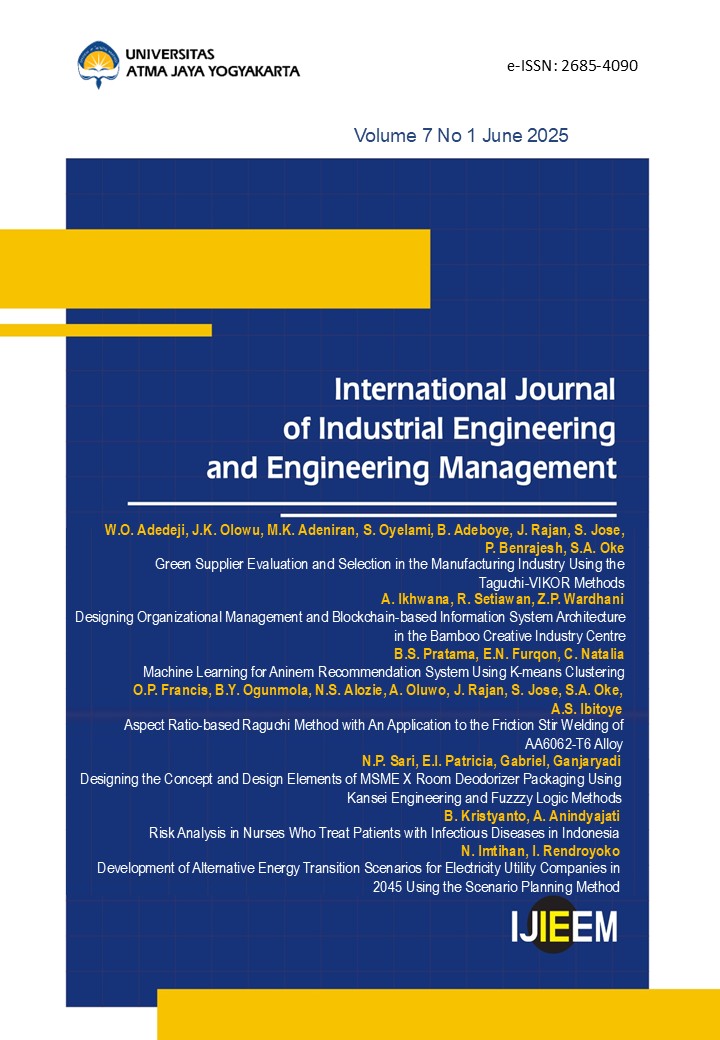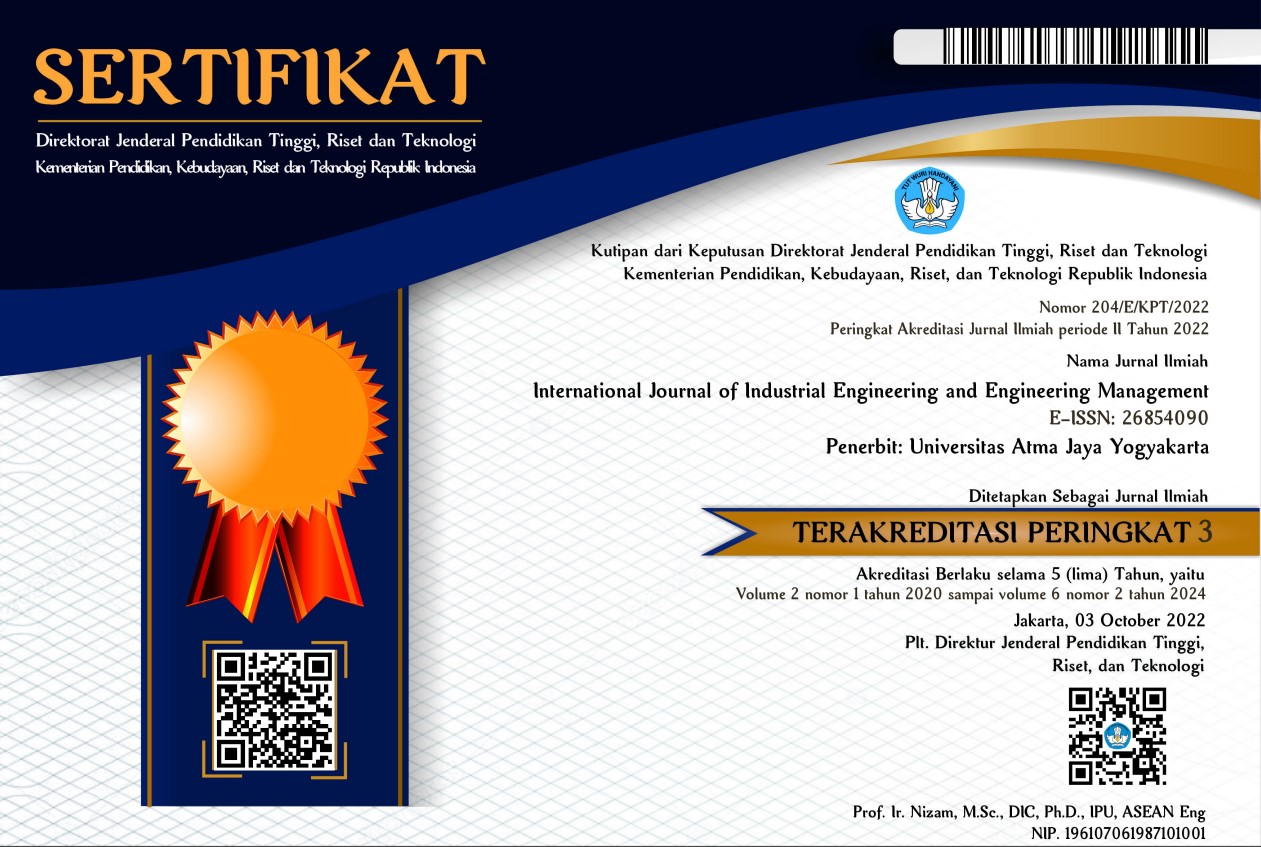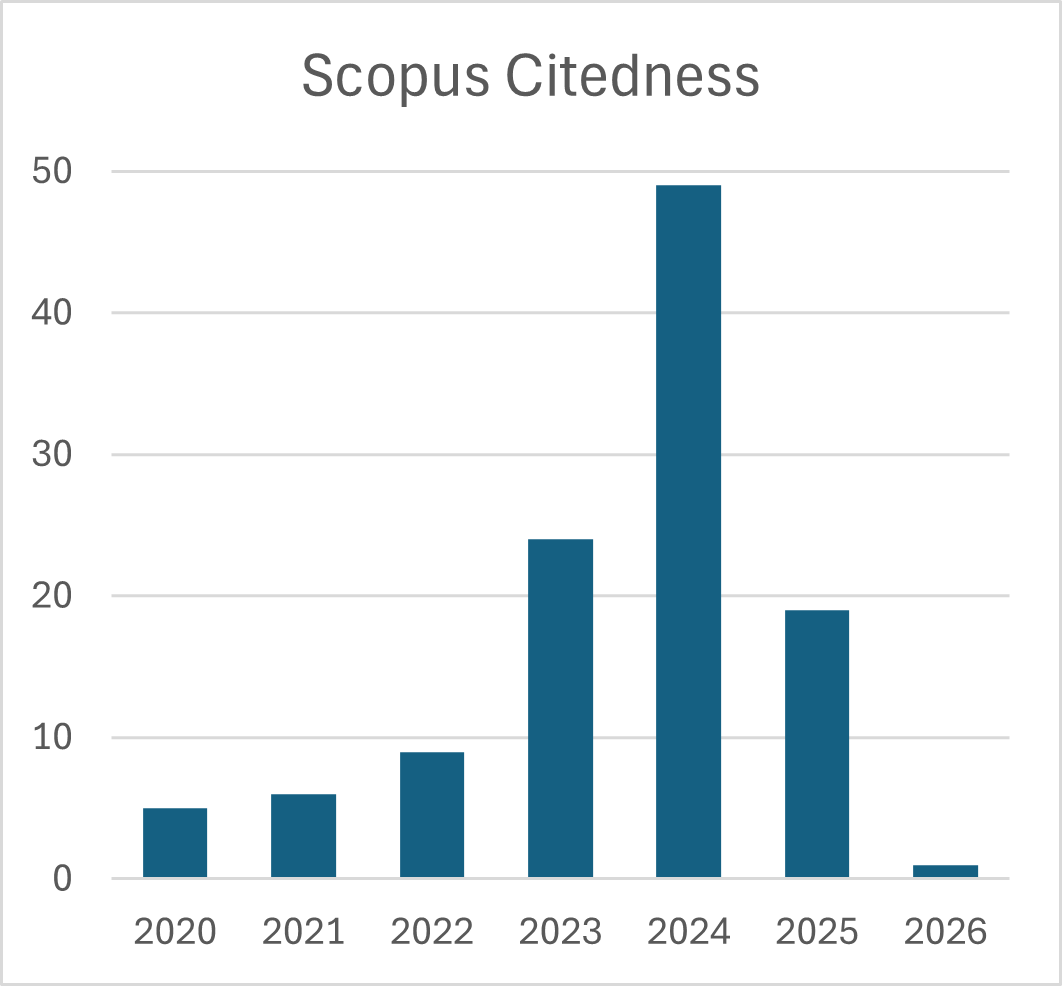Aspect Ratio-based Taguchi Method with An Application to the Friction Stir Welding of AA6062-T6 Alloy
DOI:
https://doi.org/10.24002/ijieem.v7i1.7885Keywords:
decision-making, exhaust emission, logistics, optimization ordering, packing industryAbstract
This research proposes a new method of modified Taguchi method based on aspect ratios of the parameters integrated with the present worth method for the determination of optimal parametric setting during the friction stir welding process. As a cornerstone feature in the optimization procedure, aspect ratios are uniquely formulated where single parameters are replaced with products of parameters, squares of a particular parameter multiplied by a parameter, and only squares of each parameter information that represent inputs for the determination of the orthogonal matrix, heading to the optimal parametric setting computations, ranks, and delta determination. A wide range of 83 formulations was considered. Unlike previous research, this article accounts for multiple combinations of aspect ratios greater than the members of parameters present in the factor-level framework in the traditional setting of the Taguchi scheme. A principal result reveals that when the parameters were interchanged from A, B, and C to ABC, A2C, A2 B, A2, B2, and C2, indicating tool till angle, tool rotational speed, and welding speed for A, B and C, respectively, the optimal parametric setting was 462000 (0.rpm.mm/min), 990 (0.mm/min), 12600 (0.rpm.90), 1960000rpm, 12100mm/min2. The result assists welding engineers in implementing optimal decisions during friction stir welding activities. The findings of this study stimulate welding engineers to establish sources of poor-quality welds and optimize the outputs while reducing welding costs.
References
Adegoke, K.M., Oke, S.A., & Nwankiti, U.S. (2022). Analyzing the effect of aspect ratios on optimal parametric settings using Taguchi, Taguchi – Pareto and Taguchi – ABC method: A case study in turning operations for the Incornel X750 alloys. International Journal of Industrial Engineering and Engineering Management, 4(1), 27-36.
Adegoke, R.M., & Oke, S.A. (2021). Optimizing turning parameters for the turning operations of Inconel X750 alloy with nanofluids using direct and aspect ratio-based Taguchi methods. International Journal of Industrial Engineering and Engineering Management, 3(2), 59-76.
Adekoya, A.A., Adedeji, W.O., Oke, S.A., & Rajan, A.J. (2023). Developing optimal near performance for nylon 6 loaded up with boron nitride (PA6/BN) composites using Taguchi direct and aspect ratio-based Taguchi-Pareto method. Journal of Engineering and Applied Science, 70(1), Article 19.
Alam, Md.P., & Sinha, A.N. (2021). Optimization of process parameter of friction stir welding using desirability function analysis. Welding International, 36(3), 129-143.
Ghangas, G., Singhal, S., Dixit, S., Goyat, V., & Kadiyan, S. (2022). Mathematical modelling and optimization of friction stir welding process parameters for armour-grade aluminium alloy. International Journal on Interactive Design and Manufacturing, 17(4), 2323-2340.
Gopi, S., & Manonmani, K. (2013). Preheating tensile strength of double side friction welded 6082-T6 aluminium alloy. Science and Technology of Welding and Joining, 17(7), 601-607.
Habba, M.I.A, Ahmed, M.M.Z., Seleman, M.M.E., & El-Nikhaily, A. (2018). Analytical model of heat generation for friction stir welding using Bobbin tool design. Journal of Petroleum and Mining Engineering, 20(1), 1-5.
Hashemzadeh, M., Garbatov, Y., Soares, C.G., & O'Connor, A. (2021). Friction stir welding induced residual stresses in thick steel plates from experimental and numerical analysis. Ships and Offshore Structures, 17(5), 1053-1061.
Jayabalakrishnan, D., & Balasubramanian, M. (2017). Friction stir weave welding (FSWW) of AA6061 aluminium alloy with a novel tool-path pattern. Australian Journal of Mechanical Engineering, 17(2), 133-144.
Khan, N. (2020). Optimization of friction stir welding of AA6062-T6 alloy. Materials Today: Proceedings, 29, 448-455.
Kundu, J., & Singh, H. (2017). Modelling and analysis of process parameters in friction stir welding of AA5083–H321 using response surface methodology. Advances in Materials and Processing Technologies, 4(2), 183-199.
Liao, T.W., & Daftardar, S. (2013). Model based optimization of friction stir welding processes. Science and Technology of Welding and Joining, 14(5), 426-435.
Nandan, R., Roy, G.G., Lienert, T.J., & Debroy, T. (2013). Numerical modelling of 3D plastic flow and heat transfer during friction stir welding of stainless steel. Science and Technology of Welding and Joining, 11(5), 526-537.
Odudare, S.O., Oke, S.A., & Nwankiti, U.S. (2023). Parametric selection and optimization of the drilling of AZ91 magnesium alloys using the Taguchi method incorporating direct and aspect parametric ratios. Engineering Access, 9(1), 31-46.
Oke, S.A., & Adekoya, A.A. (2022). Aspect ratio consideration in the optimization of maintenance downtime for handling equipment in a container terminal. Engineering Access, 8(1), 129-141.
Orozco, M.S., Macias, E.J., Roca, A.S., Fals, H.C., & Fernandezx, J.B. (2013). Optimization of friction-stir welding process using vibroacoustic signal analysis. Science and Technology of Welding and Joining, 18(6), 532-540.
Pew, J.W., Nelson, T.W., & Sorensen, C.D. (2013). Torque-based weld power model for friction stir welding. Science and Technology of Welding and Joining, 12(4), 341-347.
Rathinasuriyan, C., & Kumar, V.S.S. (2020). Optimization of submerged friction stir welding parameters of aluminium alloy using RSM and GRA. Advances in Materials and Processing Technologies, 7(4), 696-709.
Rodrigues, D.M., Lietao, C., Louro, R., Gouveia, H., & Loureiro, A. (2013). High-speed friction stir welding of aluminium alloys. Science and Technology of Welding and Joining, 15(8), 676-681.
Saeidi, M., Manafi, B., Givi, M.K.B., & Faraji, G. (2015). Mathematical modelling and optimization of friction stir welding process parameters in AA5083 and AA075 aluminium alloy joints. Proceedings of the Institution of Mechanical Engineers Part B: Journal of Engineering Manufacture, 230(7), 1-11.
Savas, A., Pamuk, M.T., Secgin, Ö., & Arda, E. (2020). Numerical modelling of friction stir welding using experimental temperature data. Emerging Materials Research, 9(2), 499-505.
Singh, K.V., & Hamilton, C. (2013). Developing Predictive tools for friction stir weld quality assessment. Science and Technology of Welding and Joining, 15(2), 142-148.
Sundqvist, J., Kim, K.H., Bang, H.S., & Kaplan, A.F.H. (2017). Numerical simulation of laser preheating of friction stir welding of dissimilar metals. Science and Technology of Welding and Joining, 23(4), 351-356.
Schmidt, H., Hattel, J., & Wert, J. (2003). An analytical model for the heat generation in friction stir welding. Modelling and Simulation in Materials Science and Engineering, 12(1), 143-157.
Yunus, M., & Alsoufi, M.S. (2018). Mathematical modelling of a friction stir welding process to predict the joint strength of two dissimilar aluminium alloys using experimental data and genetic programming. Modelling and Simulation in Engineering, 2018, Article 4183816.
Downloads
Published
How to Cite
Issue
Section
License
Copyright (c) 2025 Osita Prince Francis, Bayo Yemisi Ogunmola, Nehemiah Sabinus Alozie, Adeyinka Oluwo, John Rajan, Swaminathan Jose, Sunday Ayoola Oke, Ayomide Sunday Ibitoye

This work is licensed under a Creative Commons Attribution 4.0 International License.








